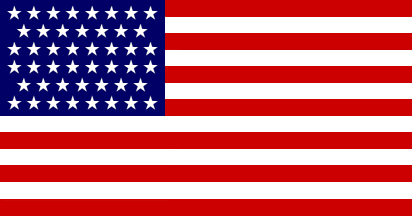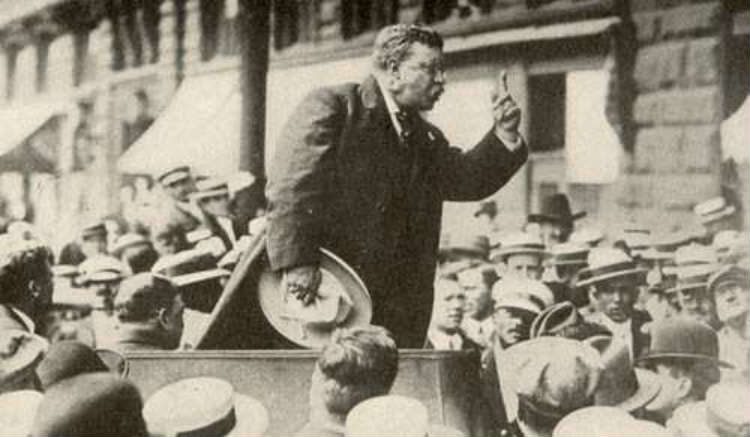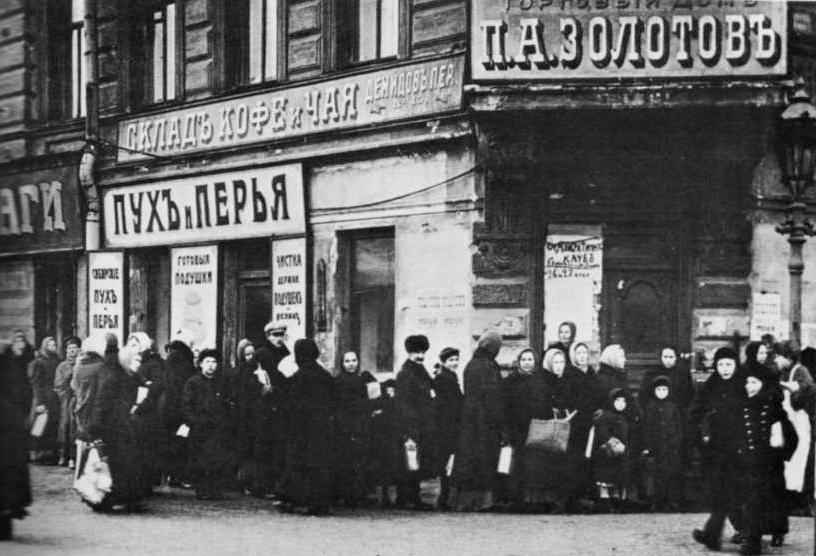Part 4: The Sleeping Giant II
- William McKinley the 25th President of the United States of America
Theodor Roosevelt death sent shockwaves throughout the US. Politicians from across the US expressed their shock at the death. Roosevelt's body was ceremoniously taken from Sagamore Hill to Townhouse of his birth in New York for national mourning.
The men responsible, the Czolgosz brothers, Leon and Luke went on trial for the murder of Theodor in state court in New York on February 19, 1902. Prosecution testimony took four days and consisted principally of the doctors who treated Theodor and various eyewitnesses to the shooting. The defence unable to produce an effective strategy due to the refusal of cooperation from the brothers started and closed their case with a speech from the defence attorney, Andrew Warfeild.
“…Let us remember we are all part of one American family. We are united in common values, and that includes belief in equality under the law, basic respect for public order, and the right of peaceful protest. The Czolgosz brothers are not anarchists. They are men whos minds are broken. They do not deserve are forgiveness, but they do deserve the basic rights of any American. ..“
-Excerpt from the Defence of Madness, by Andrew Warfeild.
It took one hour for the jury to convict the brothers of murder in the first degree. Both men were sentenced to death by hanging. The following day they were taken to a private area within the prison compound and hung. Roosevelt’s death would later become the caused for the formation Presidents Secrete Service. An agency primarily charged with the protection of the US President. The assassination caused a backlash against anarchists and socialists groups. William McKinley first act once in office was to establish the Anti-Anarchist Laws, a series of laws that outlawed the anarchist sentiment within the US. These laws would be expanded upon throughout McKinley’s presidency after his wife’s death on the 20 Jun 1902.
The Second Term of McKinley would become one marked with controversy. The Chicago Labour Dispute on 1902 saw the immediate crackdowns against the unions. Raids and arrests saw the strike ended. The same process was deployed throughout 1902-3. In 1903 a move to expand the Anti-Anarchist Laws to cover Workers Unions was defeated by a narrow margin. The latter of half of 1903 witnessed the birth of the Muckraker. McKinley’s administration allowed for rampant corruption throughout the years of 1903-1905. The crackdowns against workers unions and consequently their rights, allowed for mass excess from the richest in the US. Muckrakers, journalists that exposed corruption, excess and crimes of prominent figures. Initial attempts to crackdown on these Muckrakers and their publishers backfired, adding more public attention to the articles that were being suppressed. The Muckrakers success is often attributed to the rise of mass media. Across the world printing presses were becoming commonplace, radio was being adopted by the masses. In 1906 it was estimated that the Ottoman Empire and its territories included over 600,000 radios in civil use.
-A Comic Sketch depicting the scandals faced in Washington. 1904.
12 Jan 1903 hostilities broke out between the Entente and Axis alliances. McKinley announces the USAs neutrality in the conflict. McKinley was criticized by both the oppositions and war hawks within his own party. However among the majority of the US population, McKinley’s declaration of neutrality was received positively.
24 March 1904 William McKinley passed away in his sleep. The President in recent months had developed a heart condition and it believed he passed away quietly in his sleep. Charles W. Fairbanks would win the Republican Nomination. A popular choice among conservatives for his moderate stance of progressive issues. He ran with policies of increased foreign trade, a protective trade tax and expand merchant navy. A sticking point of the election came the subject of Alaska. Alaska's Mineral deposits had become renowned across the world and seen as a mistake by the US in not acquiring the territory when they had the chance. The Ottoman Policy toward the end of the 20th Century had been of benign neglect. Its expansions into the African Continent had led to an abundance of territory to integrate. Encouragement to emigrate to Alaska had ended and instead the focus was on settling the african territories. In 1901 the Ottomans had granted the Alaskan Territories Bölnseyi. Bölnseyi was the act of granting a territory of the Ottoman Empire provisional government, with representation at the court of the Sultan. The Bölnseyi of Alaska with it diverse religious population was granted laws that allowed it avoid religious violence. Orthodox and other Christians were allowed to hold loca positions of authority, including the right to buy and sell land. It was expected that the religious freedom awarded to this territory would encourage emigration, but by the end of the of 1890 the total population amounted to just around 90,000. To push up numbers, the Bölnseyi advertised in the US. By 1910 Americans would make up over 15% of the total population.
03 February 1904 a secret petition by American settlers in Alaska was delivered to the Head of the Bölnseyi, Alta Yadin, requesting the annexation of Alaskan territories near the coast by the USA. The ring leaders were rounded up in arrests and their goods seized. News of the round up led to fears that the American population were being persecuted. The stream of settlers in Alaska continued in spite of this event, but relations were permanently harmed by it. Fairbanks expanded his policies to protection of American Citizens both far and wide. By the end of November Fairbanks had pulled far enough ahead for the election to become a conclusions. At the end of the year Charles W. Fairbanks became the next president of the United States of America.
-Charles W.Fairbanks 26th President of the United States of America
President Fairbanks administration took place at one of the most turbulent periods in human history. Tensions in Europe were high and this was reflected in the impact to foreign trade in the USA. The Our Land First (OLF) movement was established and endorsed by prominent members of both the Republican and Democratic parties. It called for a return to self sufficiency, a limit to immigration and an expansion in the US defence. Fairbanks endorsed the movement and in 15 July 1907 announced the USA neutrality to all conflicts outside of the American Continents. Fairbanks stance of neutrality would not change throughout his presidency. The OLF an offshoot of the Temperance movement helped shine a light on the corruption with the US. They preached morality and faith. For a man to be self reliant was to be closer to God. Fairbanks used the OLF to help pass laws to limit immigrants from nations outside of Europe and uphold the Gold Standard.
- The OLF 1906 Official Map of the American Dream
05 August 1906 the Head of the OLF, released a map of Greater America. The map placed parts of Canada, Mexico, the Caribbean and the entirety of Alaska as US territory. The was publicly endorsed by Fairbanks, but not the US government. The Ottoman Empire issued a public complaint against the map and Fairbanks. 28 August 1906 a settler dispute over a bag of Potatoes and a Cow, almost lead to an international incident. The incident became known as The Casserole affair. Three Turkish youths on a boat sailed to US Oregon. While there they stole a bag of 12 potatos and shot a cow before fleeing back to Alaska. They were chased by a US Monitor. The Ottoman Empire Pacific Fleet on patrol in the region, intervened on behalf of the youths. The US ship placed itself in the way of the Fleet and refused to move until the youths had been returned to stand trial. The standoff took place over several hours before the the Ottoman Fleet Admiral returned the bag of Potatos and $100s as compensation for the Cow. The incident became a source of international embarrassment for both nations. Even with relations soured a large community of Turkish people grow in the US. Before the outbreak of hostilities over 30,000 Turkish migrants worked and lived in the US on a permanent basis.
17 Feb 1906 The French Government surrenders to the Entente forces, ending the First World War. What followed was one of the greatest humanitarian crisis in history. Much of Europe was ruin, France and its breakaway states suffered from Food Shortages and famine. The Entente were unable to formulate a response to the crisis. Private individuals were allowed to commit funds, but no government could come to agreement on how to address the crisis. Over a 300,000 people throughout europe would die due to food shortages. Over a million Europeans in the year following the end of the war would emigrate to countries throughout South and North American continents. The nation of Chile received some of the largest these numbers and in the 1910 Chilean Government's National Statistics attributed just under 5% of the current population, immigrants from Europe. In 1898 the Chilean Government accepted a loan from the Ottoman Empire for trading rights to lead and zinc deposits found within the country. The funds much needed by the Chilean people after the end of the 3rd Pacific War with Bolivia and Peru.
The British Empire, upset with the lack of response to the famine, formed what would become known as the League of Nations. The League would act as an international court of arbitration where nations of the world could come to agreement over issues, to avoid crisis and warfare. The Ottomans Empire and Italy also joined the League in the opening days. The USA and the Scandinavian Union would join the League in 1908. Controversially the USSR was denied entry, due to the state of Civil War that gripped the country. In 1908 a mob of migrants attacked the Ottoman Embassy. Two guards were injured and one of the members of staff killed, when a fire broke out. The Sultan threatened to call in the debt and in response the Chilean government appealed to the League of Nations. In 1908 Fairbanks lost the Presidency to William J.Bryan.
-The symbol of the short lived League of Nations.
William J.Bryan ran had previously run for President in 1900, in a close election against William McKinley. He lost but vowed to run again. By 1908 he gathered enough support among the Democratic Party to win the nomination. Fairbanks while liked, did not prove popular with the more right wing within his party, who demanded a firmer stance. In 1907 Fairbanks decided to run for a second term against the wishes of the Republican Party. The Republican Schism of 1907 was renowned for the infighting between Republican members. By 1908 the party had been unable to produce another candidate and instead begrudgingly gave Fairbanks the nomination. Fairbanks won the support of his party, but did not win the support of its members. In some cases bitter Republican Senators would engage in arguments on the Senate floor. The infighting in the end caused too much damage for the Fairbanks campaign to rally and William J.Bryan became the 27th President of the United States of America.
In 1909 the League met to discuss the issue. The USA intervened on behalf of the Chilean government, while the British Empire and Ottoman Empire voted against Chile. Italy, France and Scandinavia abstained from the vote. Following the decision of the nation the Ottoman Empire dispatched a fleet to seize assets belonging to the Chilean government. In response a force of US, Chilean, Brazilian and Argentinian ships met them off the coast of Chile. Each of these nations had a vested interest in supporting Chile. Fairbanks saw this attack as an attempt to violate the Monroe Doctrine, while the other nations had also relied upon loans from European Powers to support their governments. The Ottoman Forces not expecting a force of this side, backed down in response. The Sultan took this as an insult and flagrant flaunting of rules to be a member of the League. Relations between both nations continued to decline to outright hostility, both publicly and privately. President Bryan ran on the issue of Alaska and defending the Monroe Doctrine from European Imperialism. 05 Sept 1911 The Kurban was sunk.
Authors Note: I update when I want and I have the l33t map making skillz.




























